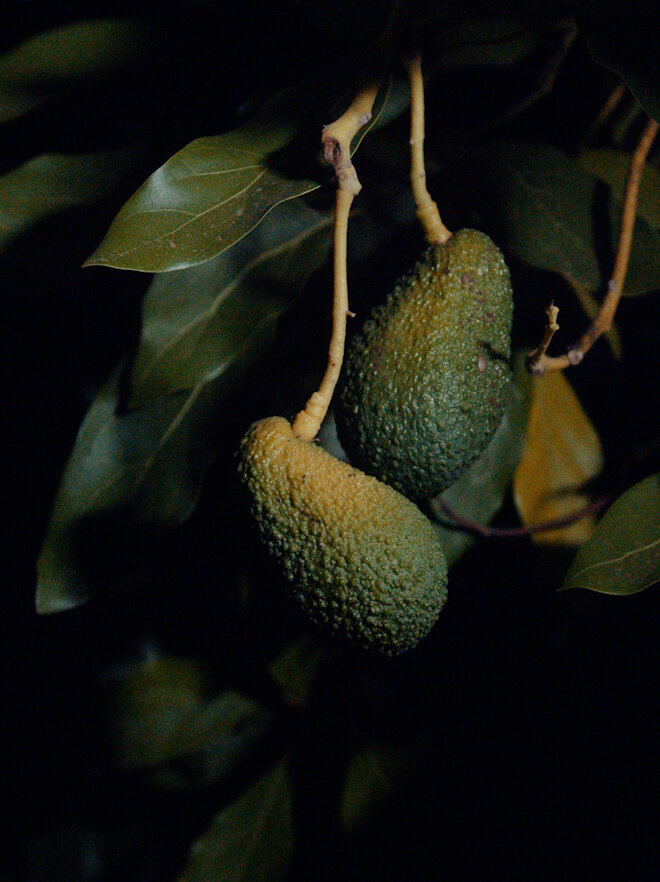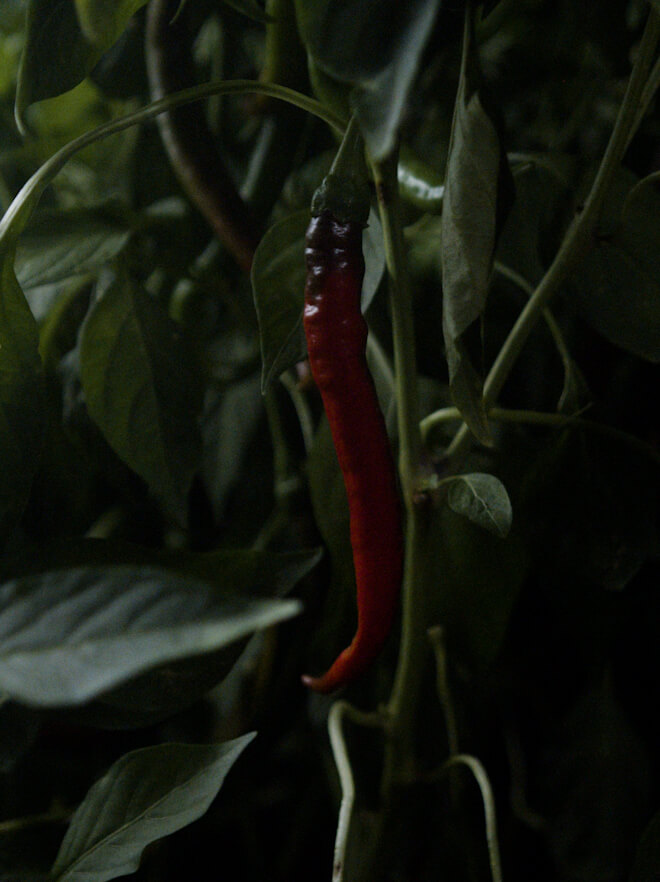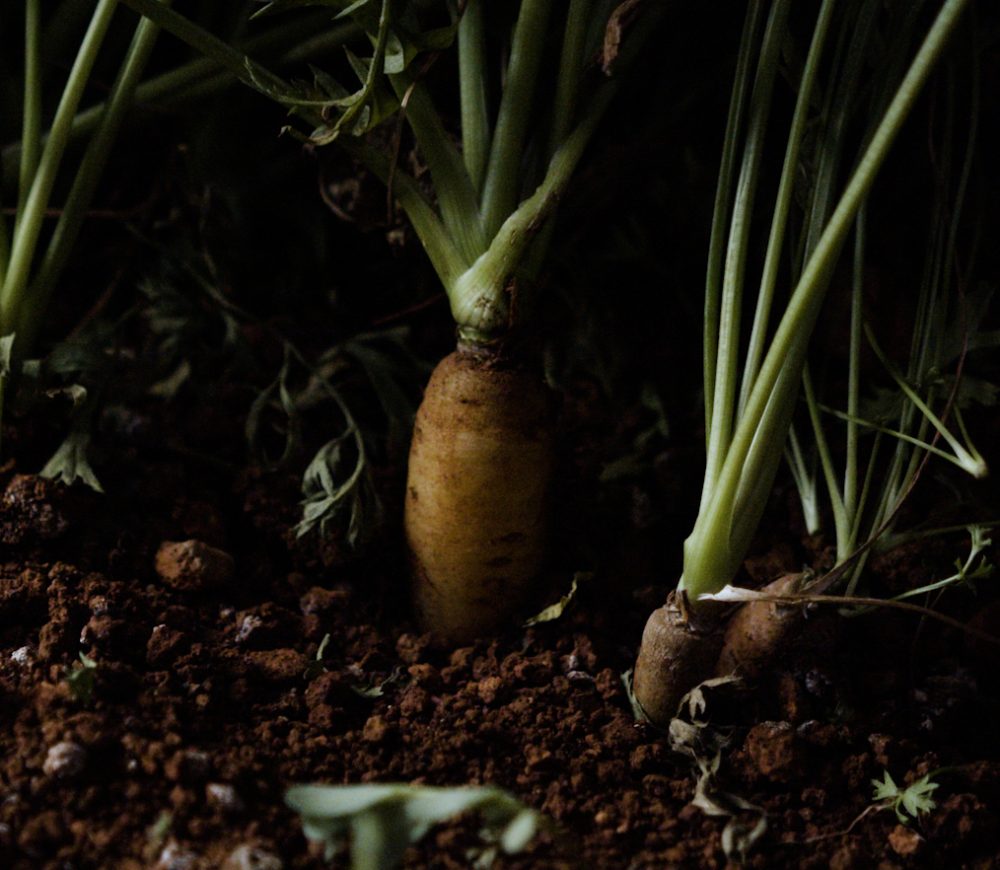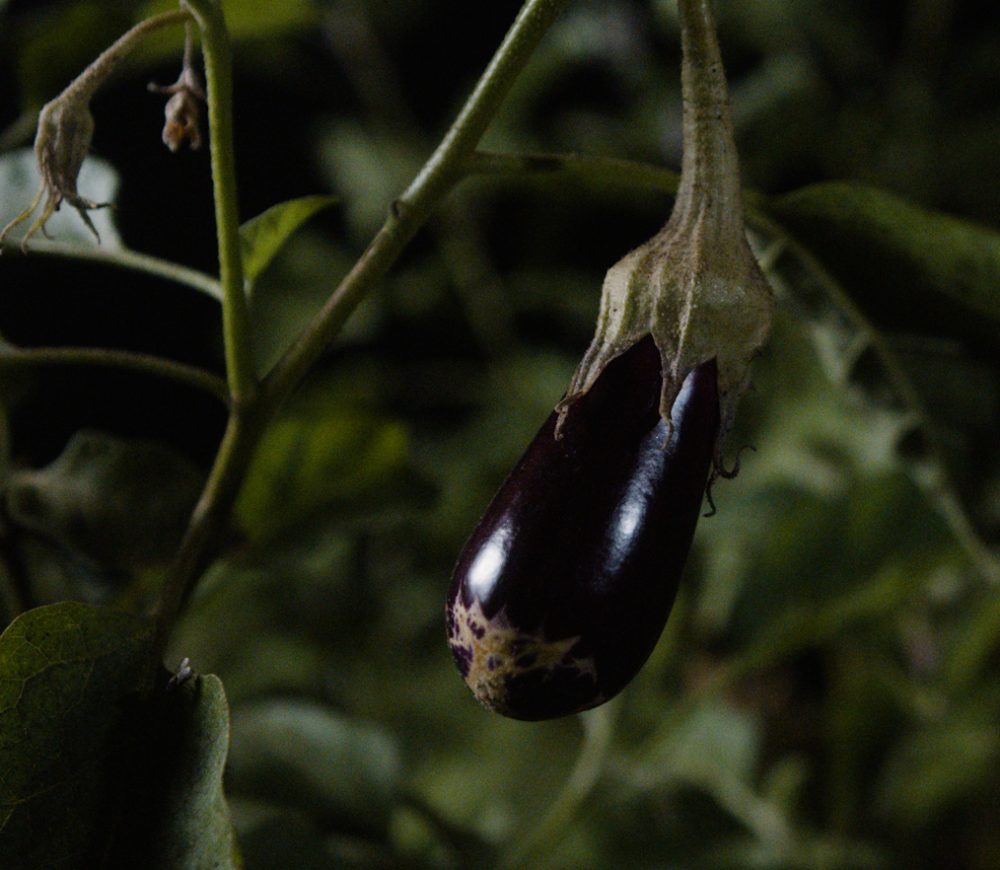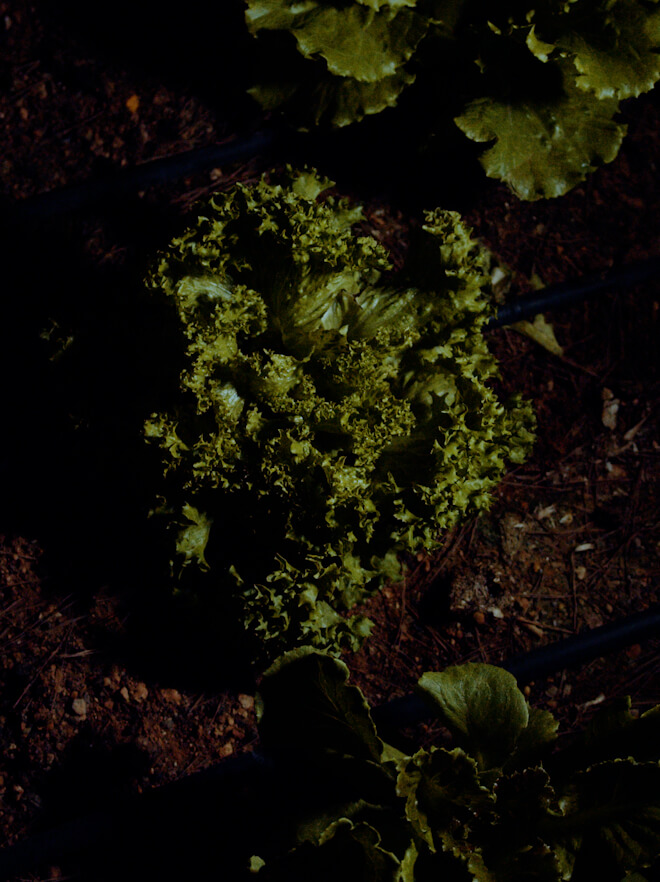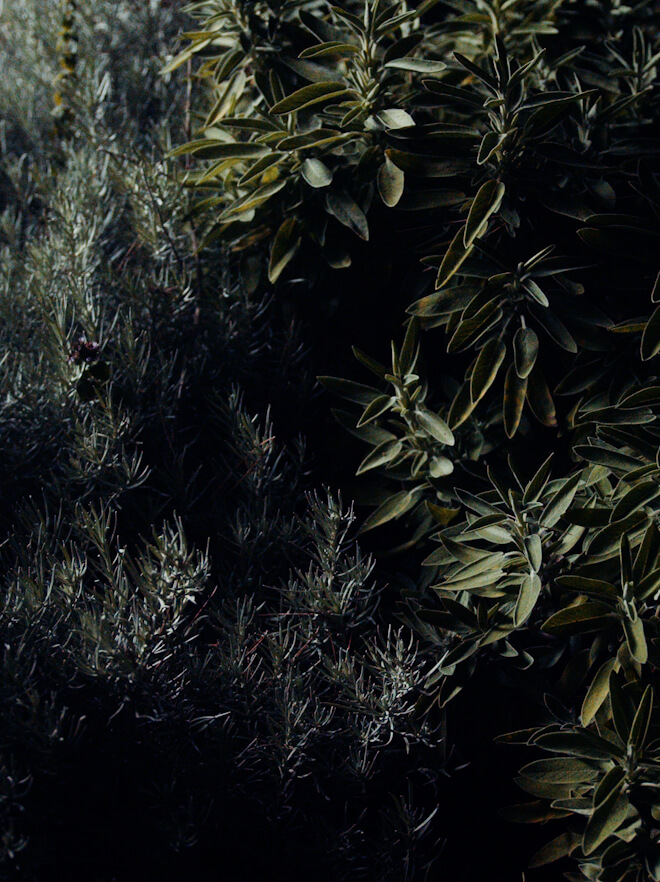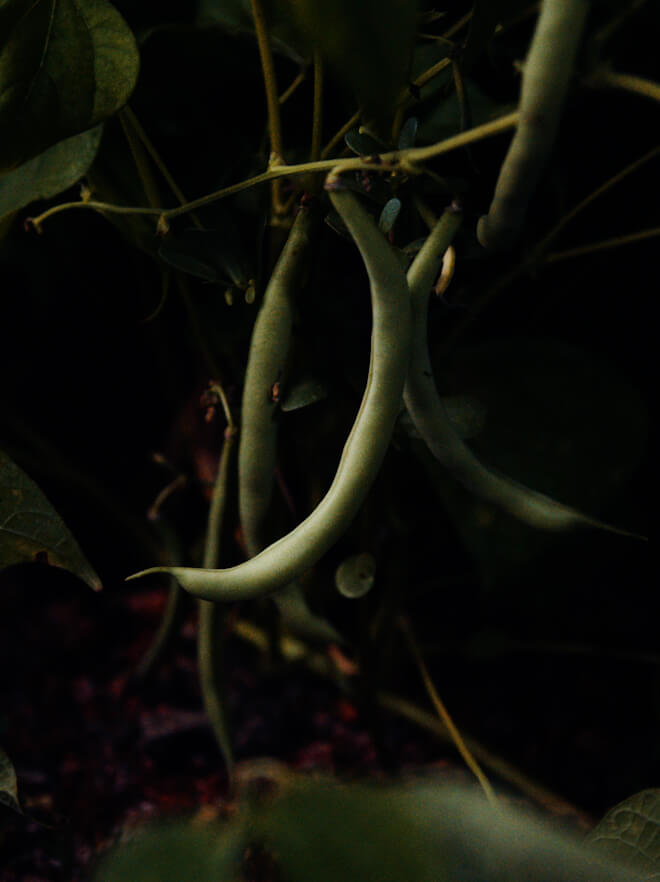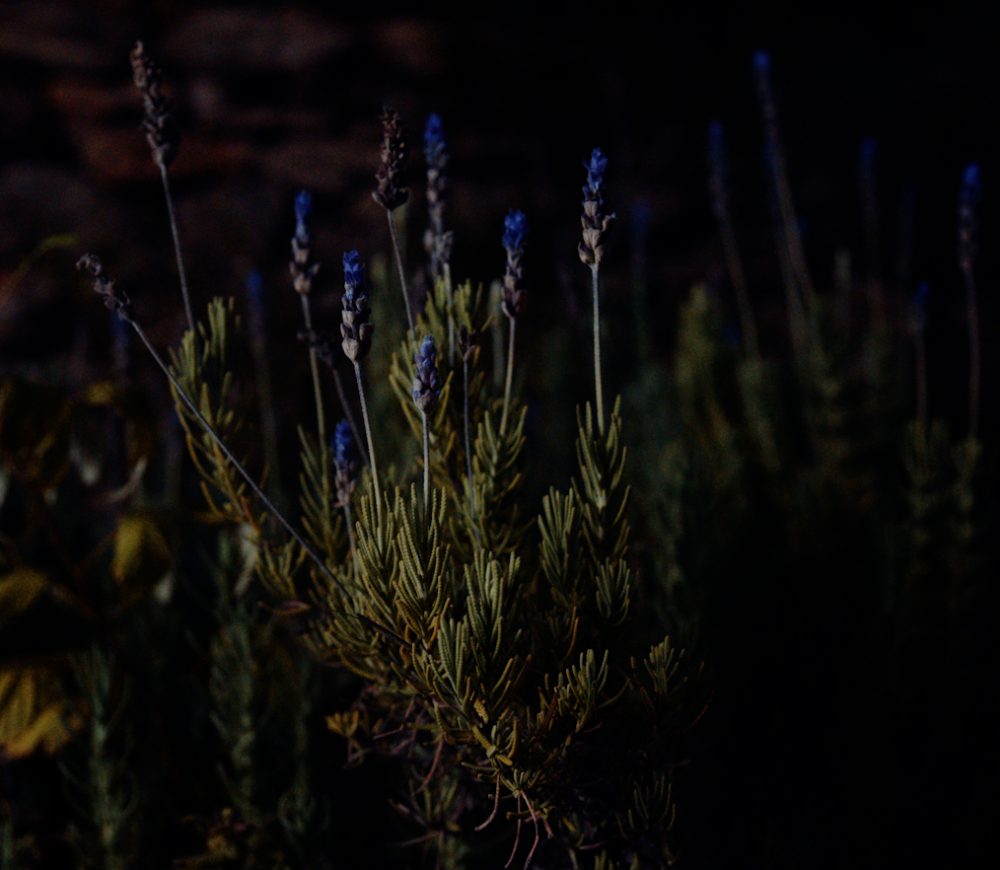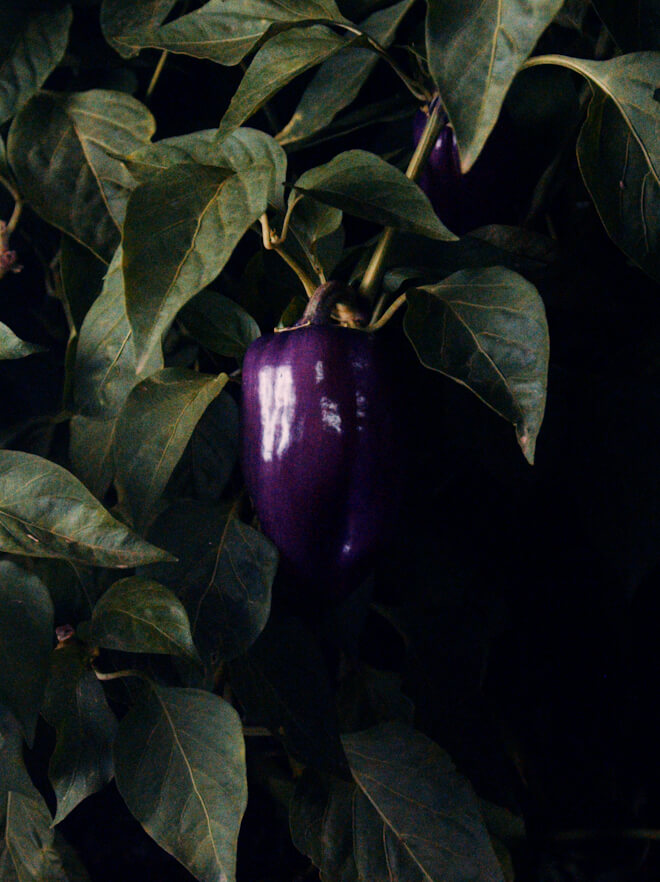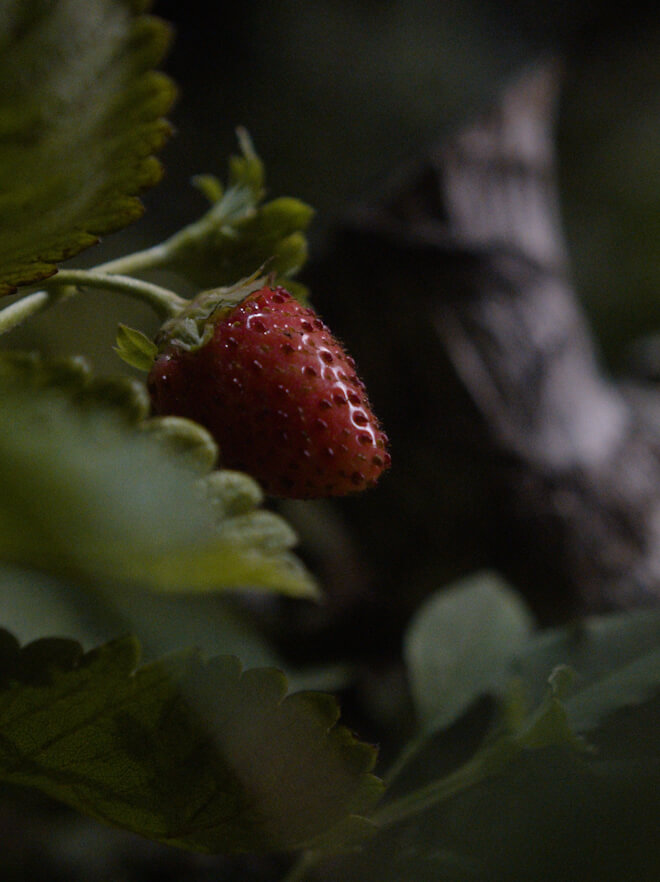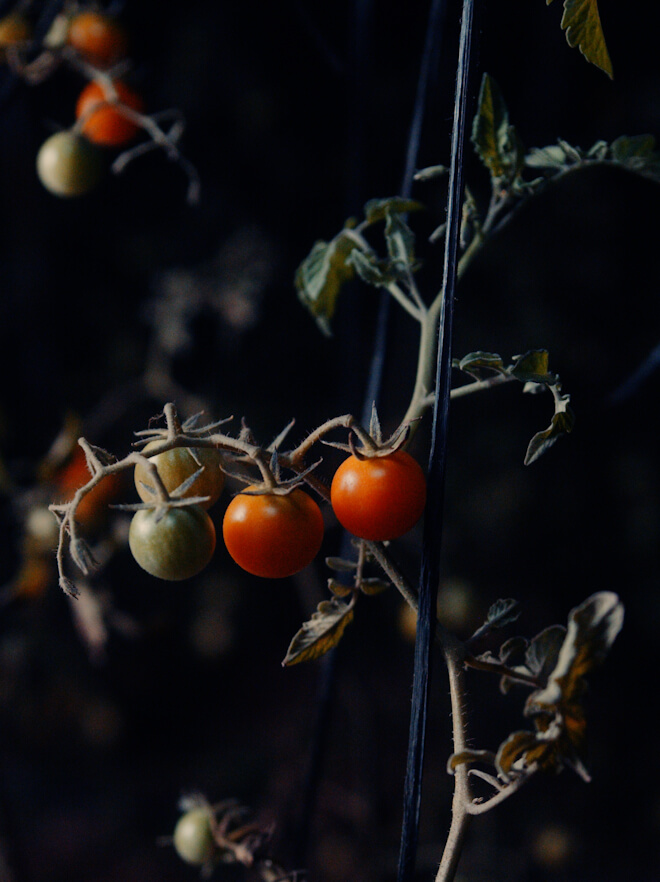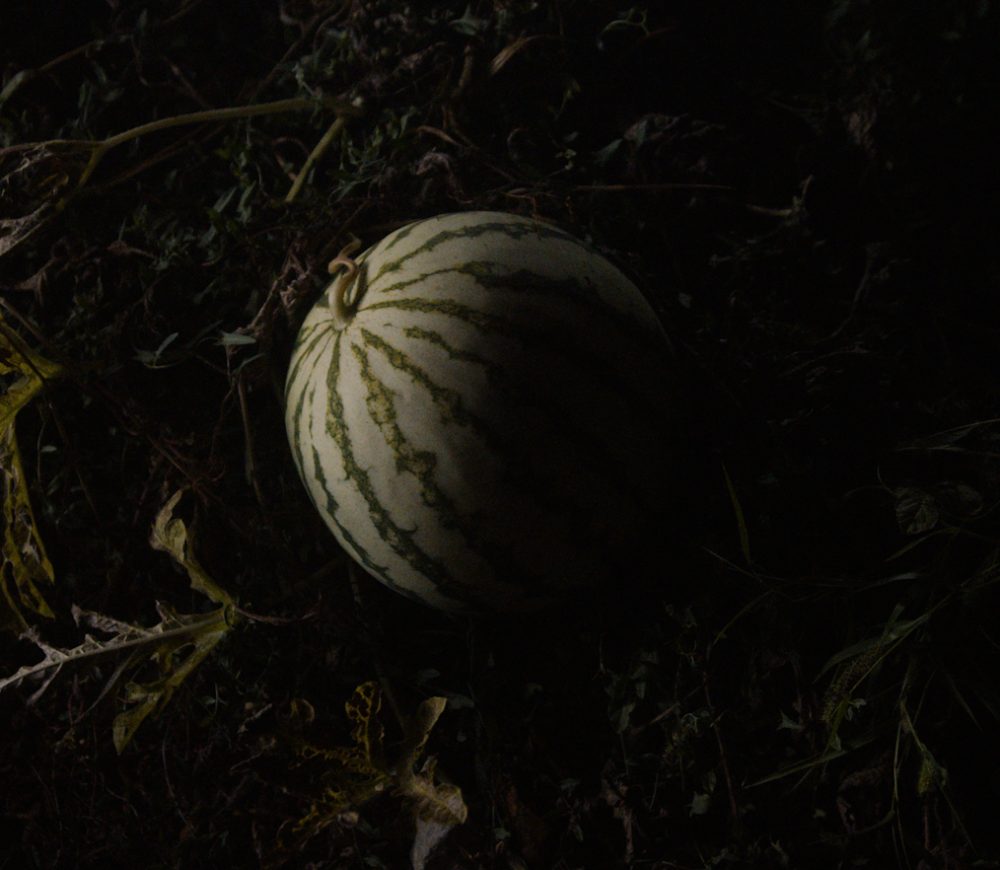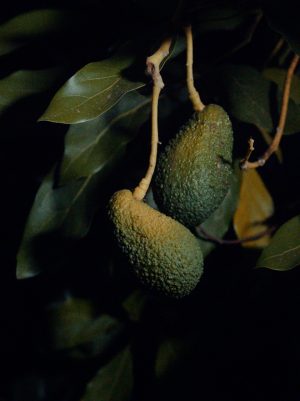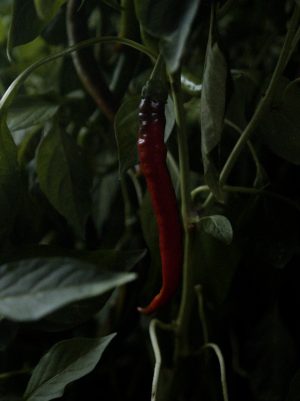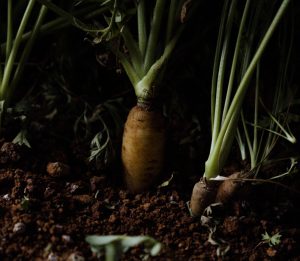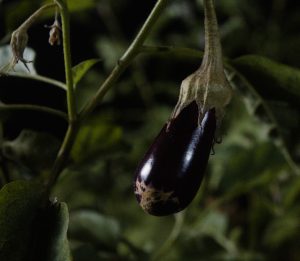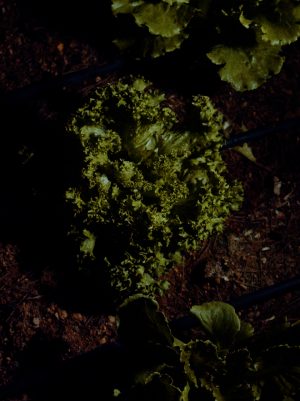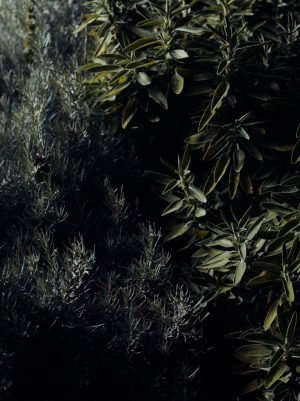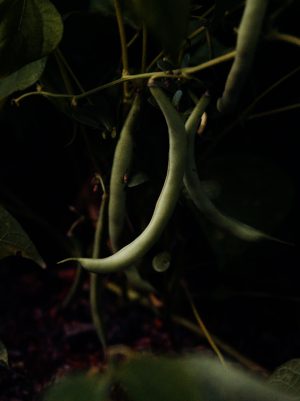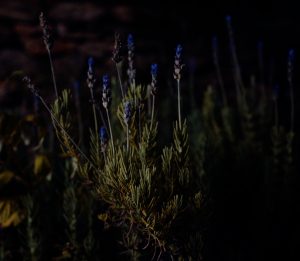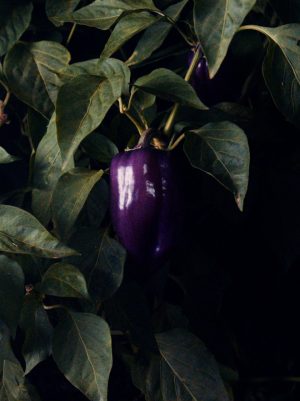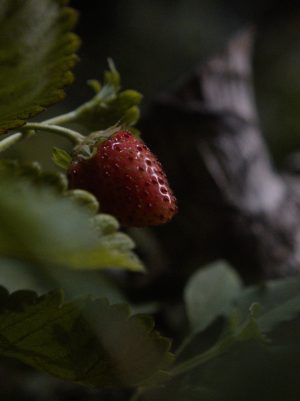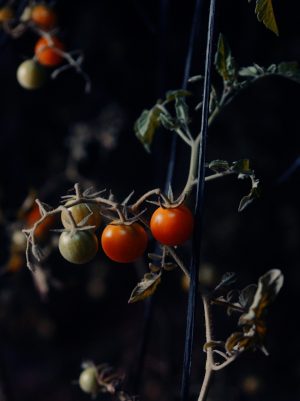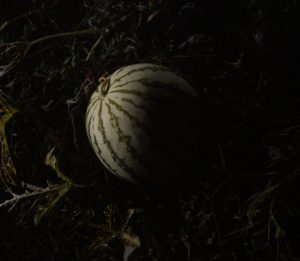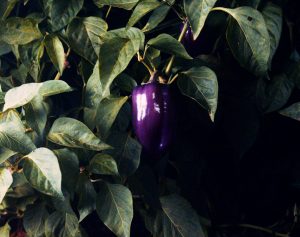
09
Pepper
One of the easier crops to cultivate, the peppers at La Granja range widely in size, color and texture. “We have many types of them,” said Oscar. “Really nice ones. We have one from here, from Ibiza, that is the purple one. The flavor is very similar, but it's a little bit softer. And then the Italian one is long, because you know, the normal pepper is a little bit fat."
Although the antioxidant-rich peppers are relatively low maintenance, Oscar still considers himself devoted. ”To care for plants is like, for a moment you forget about yourself and you have to pay attention to something else,” he said. “I treat all my plants like my babies. Just to see them grow makes me happy.”
Aloma Brotons Vidal is one of the cooks at La Granja.
“To have plants is like, for a moment you forget about yourself and you have to pay attention to something else," Oscar added. "For a moment, you say, well, I don't care, I’m gonna give my love and my attention to my babies, because they need me.”
01
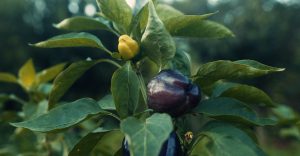



Bell peppers are native to Mexico, Central America, and northern South America. The seeds were imported to Spain in 1493 and then spread through Europe and Asia.
02
![]()
![]()
The name pepper was given by Europeans when Christopher Columbus brought the plant back to Europe. Like the tomato and eggplant, the bell pepper is a botanical fruit used in the kitchen as a vegetable.
03
![]()
![]()
Bell peppers are rich in many vitamins and antioxidants, especially vitamin C and various carotenoids. A single bell pepper provides up to 169% of the daily recommended value.
04
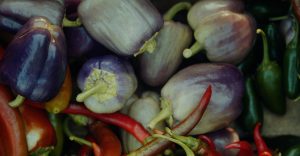



Other vitamins and minerals in bell peppers include vitamin K1, vitamin E, vitamin A, folate, and potassium.
05
![]()
![]()
"I find a lot of our guests walk through the garden every morning and they see the farmers picking the plants and bringing it to the kitchen and just by osmosis they start picking up the idea of the possibilities of either growing your own food or looking for people that are growing in your region," said Andy.
06
![]()
![]()
Andy added: "When it comes right from the field right to the kitchen within minutes and then to your plate, there's no substitute for that."
07
![]()
![]()
The peppers are picked, washed and then most often put into the open-air oven to be roasted until they char on the outside and taste smokey, sweet within, to be served with a bit of salt as part of the Farmers Table.
08
![]()
![]()
"We have a meeting with the gardeners every Monday,” says Eduardo. “So we know more or less how much of the product we can get in the week. We plan the crops months ahead.”
09
![]()
![]()
But, he adds, “we need to be very flexible because one week it rains a bit too much and the peppers are less than the week before, these kinds of little things.”
Avocado
- Originated in south-central Mexico
- May help to ward off cancer and inflammation and assist digestion and heart health
- Harvested from late spring to early fall
- 4-7 years seed to harvest
Chili
- Originated in Mexico
- May help promote weight loss and relieve pain
- Grown in summer
- 60-95 days seed to harvest
Carrot
- Originated in Persia
- Improves health of eyes, skin, hair, growth, and immune system
- Grown year round
- 60-80 days seed to harvest
Eggplant
- Originated in southern Asia
- Strengthens bones, reduces symptoms of anemia, improves cognition and cardiovascular health, protects the digestive system
- Grown in summer
- 100-150 days seed to harvest
Greens
- A great source of beneficial plant compounds like antioxidants and polyphenols
- Strengthens heart health, lowers risk for numerous chronic diseases
- Grown year round
- 2-3 weeks seed to harvest
Herbs
- Rich with unique antioxidants, organic compounds, essential oils, vitamins and phytosterols
- Antiseptic and anti-inflammatory properties
- Thought to strengthen immunity and reduce risk of various diseases
Green Bean
- Originated in Peru
- Contains vitamins A, C, K, folic acid and fiber
- Supports brain health, repairs cell damage and strengthens bones
- Grown in summer
- 50-55 days seed to harvest
Lavender
- Originated in the Mediterranean and Middle East
- Antiseptic, anti-inflammatory, can help heal minor burns and insect bites
- Grown in summer
- 14-21 days from seed to harvest
Pepper
- Originated in the Americas
- Improves eye health and reduces risk of cancer, anemia and heart disease
- Grown late spring to early fall
- 60-90 days seed to harvest
Strawberry
- Originated in the Americas
- Contributes to skin and hair health, reduces the risk of cardiovascular disease and stroke
- Grown in spring
- 5 months to a year or more seed to harvest
Tomatoes
- Originated in the South American Andes
- Improves heart and skin health, may prevent cancer and other diseases
- Grown late spring to summer
- 60-80 days or more seed to harvest
Watermelon
- Originated in Africa
- Improves heart and eye health, lowers inflammation, assists with digestion and hydration
- Grown in summer
- 80 days seed to harvest
Contact
Berlin
Zur Alten Flussbadeanstalt 1
10317 Berlin, Germany
10317 Berlin, Germany
LISBON
Largo de Santa Marinha 1
1100-383 Lisbon, Portugal
1100-383 Lisbon, Portugal
Website by Studio Airport
